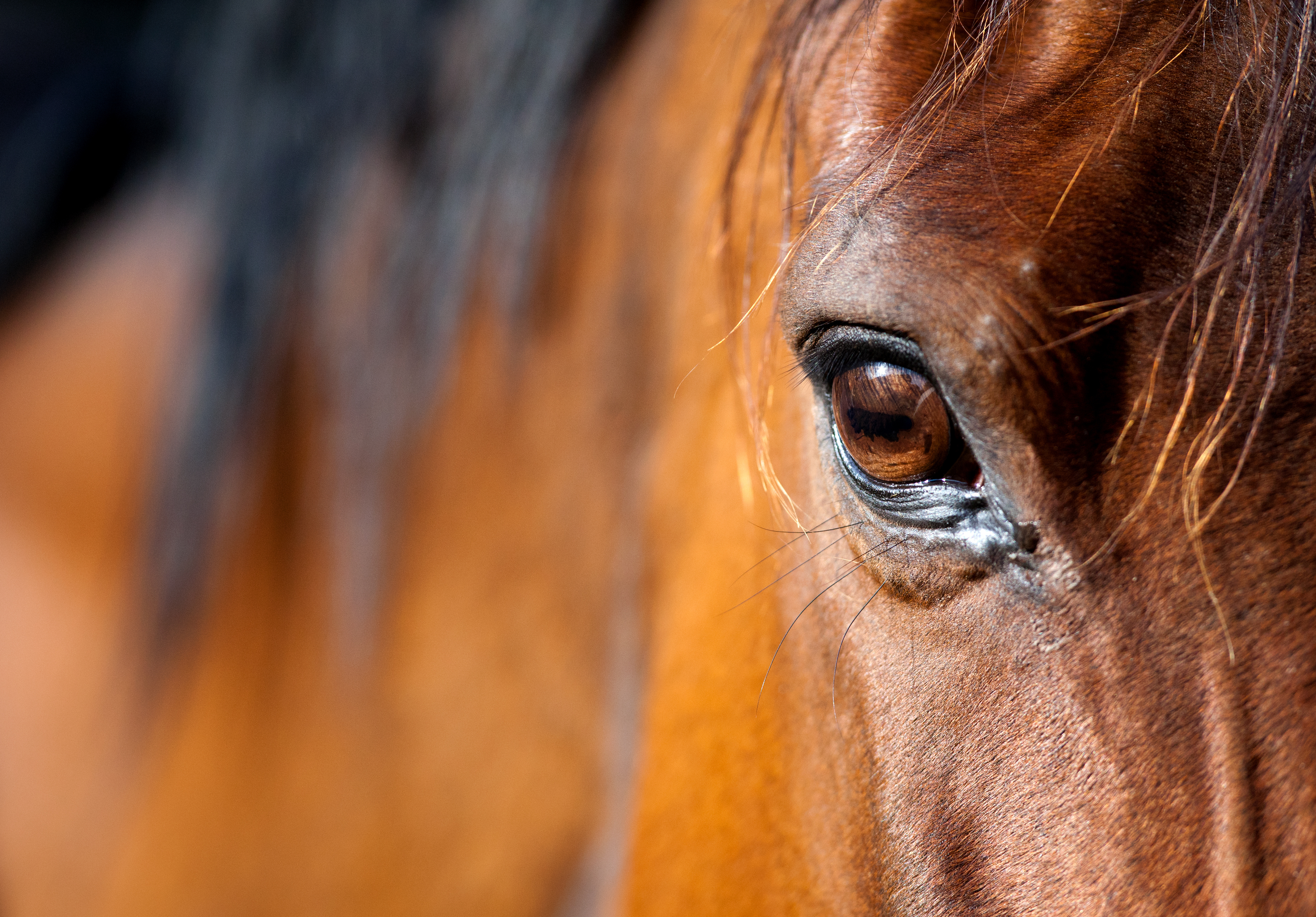 EquusMagazine.com - Full Article
EquusMagazine.com - Full Article
If you want to shape your horse’s performance and gain his trust, you need to understand how he sees the world.
May 27, 2022
Janet L. Jones, PhD
See that sliver of light on the sand, shining through a gap in the roof of the indoor arena? Every time she goes past, Hawkeye arches her neck and skirts the boundary as if it’s a rattlesnake. The sliver changes in size and shape with the sun’s movement, and the mare seems to see each tiny difference as a brand-new snake. When a concurrent sound erupts—say, the sound of a grain of sand sliding—she leaps sideways.
These are normal behaviors that reflect the way a horse’s visual systems are hardwired into his brain. We can teach horses to overcome them, but we can’t make them go away. Nor can we make a horse see the way we do. How we respond to his fear depends partly on our own vision, which determines our expectations of what horses see.
Since the 1960s, cognitive psychologists have shown that we construct sight using information from our eyes combined with knowledge in our brains. Things can go wrong at either end—the eye or the brain. A person whose eyes become blind still sees images and dreams. One whose eyes are intact but whose visual cortex is damaged often sees lights and shadows but can’t make sense of them. In rare cases, people who are completely brain-blind can grasp a coffee cup set in front of them or navigate around objects, responding to the physical world even though they cannot consciously see it. This ability, called “blindsight,” isn’t limited to humans; cortically blind animals can do it, too.
Occasionally, a smidgen of visual cortex is impaired so specifically that its owner—having otherwise normal sight—suddenly cannot see color, shape or perhaps movement. Imagine trying to cross a busy street with eyes that function normally but a brain that can’t perceive motion. Cars travelling 60 miles an hour become a series of still images stopped along the road. At the next glance, they’re still stopped, but in different locations.
Neuroscientist Gerald Edelman said it best: “Every perception is a creation.” The trouble is that horses create their perceptions in ways that are very different from ours. Visual information travels from the eye to the brain in both species, of course. But the human brain sends back six times as much neural information in the opposite direction, transmitting messages to the sensory relay station that captures incoming views. This wiring is infrastructure for perceptual interpretation: the effect of knowledge being melded with the eye’s pictures of the outside world. So, who’s more objective in seeing reality, you or your horse? Hate to break the news, but it’s probably your horse. His brain is less prone to illusions and assumptions than yours is.
Equine vision is different from human vision in almost every way—acuity, range, eye contact and detection of peripheral motion, just for starters...
Read more here:
https://equusmagazine.com/behavior/eye-eye-31022/

No comments:
Post a Comment